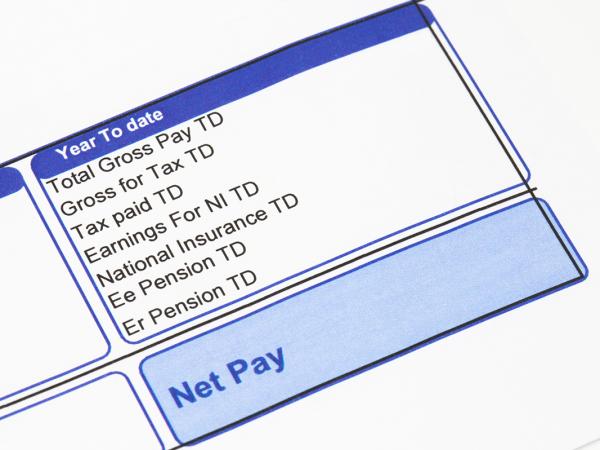Getting tax status wrong: information for employers
Ideally, you should make sure the tax status is correct in the first place. There is lots of information to help you, and you should always keep records of your decision-making process so that you can show HMRC evidence that you took as much care as possible. As we shall see later, this can help you even if the ultimate decision you made was wrong. But what happens if you get the status wrong? This page explains what happens, from a tax and National Insurance point of view, when tax status is wrong.

Content on this page:
When tax employment status is wrong
Tax status means whether your worker is employed or self-employed.
To get the status ‘wrong’, means either that you have treated your worker as self-employed when HMRC say that the relationship means they should be employed or – more rarely – you have taken on your worker as employed when HMRC believe the relationship means they should be self-employed.
Treating a self-employed person as an employee
In the situation where you have taken on your worker as employed when they should be self-employed, HMRC are unlikely to have any issues with you if you have operated Pay As You Earn (PAYE) unnecessarily, because there is unlikely to be any loss of tax to HMRC (as PAYE tax and NIC deducted from your employee’s wages will usually be more than would be due as a self-employed person). Therefore, you and your employee may decide between you to draw a line under the past and just work on the basis of a self-employed relationship going forward.
If you do feel very strongly about retrospectively reclassifying your employee as self-employed to claim back the overpaid PAYE, you should speak to the employer helpline to get some advice on what to do. You will also have to make sure your employee understands what you are doing, so that they can regularise their position with HMRC as a self-employed person.
If you are dealing with the current tax year, this will probably involve you having to make an adjustment in your Real Time Information (RTI) submission. This will automatically generate an overpayment on your PAYE account which can then be used against a future PAYE bill or be refunded to you. You will then have to arrange to refund your employee the tax and National Insurance deducted from their wages. If you are dealing with an earlier year, we suggest you call the employer helpline to explain the situation, or you can write to them at the address shown on the helpline link.
More information about reclaiming an overpayment of PAYE can be found on GOV.UK.
Treating an employee as self-employed
The remainder of this page explains what happens where you have taken on a self-employed worker when they should actually be treated as an employee. This may have happened because your worker told you they wanted to be self-employed because of the perceived benefits that it brings and you did not know the rules, or because you wrongly thought you could choose the status that was best for you and your worker. You may also have simply interpreted your relationship with your worker differently to how HMRC view it.
Who decides if tax employment status is wrong
You find you have made a mistake
You may realise yourself you have made a mistake, or it could be your employee who tells you they think their status is wrong. If this happens, you should make sure that you do things like operate PAYE on the correct basis going forward (you can start at our setting up as an employer section for more information on how to do this).
If you only need to put things right in the current year, you can probably do this by processing payroll pay on a backdated basis. You will need to register for the PAYE scheme, get some payroll software, set everything up and then process each pay period with the relevant pay period date, starting with the oldest. You will be liable for any PAYE tax and NIC that should have been deducted but wasn’t. You may wish to seek reimbursement from your employee, however whether or not you can compel them to do so is something you would need to seek legal advice on.
For anything more than this, you may need to speak to a professional adviser regarding what action needs to be taken to put right the incorrect historic position. See the heading ‘Getting help with tax status’, at the bottom of this page, for help finding an adviser.
Putting right the historic position will usually involve contacting HMRC to explain what has happened and agreeing with them how best to correct the situation. Approaching them with an explanation – rather than waiting for them to contact you – is almost always the best course of action as it will help minimise any penalties that HMRC may be entitled to charge as a consequence of the error.
HMRC find you have made a mistake
It could be HMRC who prompt discussions with you as to your employee’s status and who then decide the tax employment status is wrong. You may wonder how HMRC would know to contact you if you had not had any dealings with them about taking on your employee. But HMRC may have received a query from your employee directly which led them to question the situation further, or someone may have even called HMRC to tip them off. Often we find that people might go along with a false self-employed status – until something goes wrong – like the employment relationship breaks down or they get ill and think they can claim statutory sick pay, or the job finishes and they want to claim out-of-work benefits etc. So disgruntled workers are a significant risk factor.
You may have just been selected for an HMRC check at random (more on these directly below). Sometimes such a check is also known as a PAYE check, a compliance check or an enquiry. If HMRC approach you and you think it is likely that your employee’s status could be re-categorised, you may want to seek some help from a tax adviser as to how to best deal with the situation. See the heading ‘Getting help with tax status’, at the bottom of this page, for help finding an adviser.
You should be aware that ‘false self-employment’ (i.e. treating someone as self-employed incorrectly), is a hot topic at the moment, due to some high profile cases like those involving cycle couriers and taxi drivers working in the gig economy. HMRC may start to be very active in this area over the next couple of years.
What might happen in an HMRC status check
An HMRC employer compliance officer will probably request a formal meeting with you.
During the meeting, the HMRC officer will ask questions to ascertain the nature of your situation and to assess the controls and checks that you have in place. You may wish to have an adviser with you during this meeting to lead the discussions with HMRC and advise on any tax technical arguments that HMRC wish to pursue. See the heading ‘Getting help with tax status’, at the bottom of this page, for help finding an adviser.
The HMRC officer may wish to review specific records, such as any payroll records/records of payments where PAYE has not been operated, worker contracts and employment status tool results. It may be the case that they ask to take these away so that they can study them later back at their office – this is quite usual. They may wish to speak to workers to get their account of the situation.
Once the officer has reviewed the situation, they should explain what is wrong (if anything) and instruct you on how to resolve the issue – they may do this by a letter sent after the meeting. If HMRC say that you owe taxes for earlier periods, they should provide you with a formal explanation of the figures that they have calculated. If you have an adviser, ask them to check these calculations. An adviser will challenge any findings by HMRC that they feel are inappropriate and try and minimise any liabilities HMRC are seeking to impose. See the heading Getting help with tax status, at the bottom of this page, for help finding an adviser.
If, broadly, you agree with HMRC’s findings, you can make a payment on account immediately (even if an exact final ‘settlement’ figure has not yet been agreed) in order to avoid incurring any more interest on unpaid taxes.
If you do not agree with HMRC’s findings, you can appeal. This appeal can be heard at an independent Tax Tribunal. The Tax Tribunal will then make a judgment based on the figures and evidence presented to them.
You can find some high-level information about PAYE checks on GOV.UK.
You can find some more in-depth information about PAYE checks in HMRC’s Compliance Operational Guidance manual. The manual describes the approach taken by HMRC when reviewing an employer's compliance, for example:
- how errors are identified,
- how the extent of the employer's culpability is decided,
- how the amount of unpaid income tax and National Insurance contributions (NIC) is quantified (including the interest and penalties due), and
- how a settlement can be reached.
You can find a good article, explaining more about HMRC’s approach to conducting PAYE checks since the Covid pandemic, with some top tips on how to prepare, on the Chartered Institute of Payroll Professionals’ website here.
You followed HMRC guidance
In our guidance on tax status, we explained that you can use an online tool provided by HMRC or you can contact HMRC for a written decision about the status of your worker.
If HMRC have provided you with a written decision about the status of your worker, you should also be able to rely on this in the event of any subsequent discussions about their tax status.
If you have used the online tool, providing:
- you have answered the questions accurately so they reflect the terms and conditions under which your worker provides you with services
- you (as the engager of the worker) or your authorised representative have completed the tool, and
- you have printed or saved a copy of the enquiry and results pages
then HMRC say you can rely on the status given by the tool for tax and National Insurance purposes.
However, please note our concerns about this in our section on tax status. If you ever find yourself in a situation where you have completed the tool in good faith but HMRC say that you cannot rely on the tool, please let us know. Although we cannot give individual advice or case support, we are very interested to hear about your experience of the system.
The consequences of incorrect tax status
There are several consequences of getting status wrong and not operating PAYE when you should have done:
- unpaid tax and NIC
- interest
- penalties
The consequences of getting a status wrong can be expensive, especially when you consider HMRC can go back to the previous six tax years for unpaid tax and NIC, interest and penalties in the case of careless behaviour. Ordinarily, the time limit for an employer ‘Regulation 80’ determination is four years, however HMRC may seek to treat an incorrect status classification as ‘careless’. We explain more about how the amount of unpaid income tax and NIC is quantified (including the interest and penalties) below.
As discussed in our guidance above on ‘What might happen in a status check’, a professional adviser may be able to help you negotiate a settlement with HMRC, to minimise any liabilities HMRC are seeking to impose. See the heading ‘Getting help with tax status’, at the bottom of this page, for help finding an adviser.
Unpaid tax and NIC (and interest thereon)
Employers are responsible for collecting tax and NIC from their employee’s pay when due and sending it to HMRC. This means that if you have not deducted tax and NIC when you should have, you will be responsible for making good the appropriate amount to HMRC. You will also have to pay any employer’s NIC, which was your responsibility from the outset.
You will be liable for any PAYE tax and NIC that should have been paid in respect of the employee. If HMRC recover tax from you, our understanding is that you may then have a right of action against the employee, however you would need to seek legal advice on this.
Also, interest is charged if PAYE tax and NICs are paid late. The current official interest rate for late payments can be found on GOV.UK. You should be aware that HMRC interest rates are linked to the Bank of England base rate, so with increased rates, the interest may now be a bigger consideration than before.
There are some rules that might help reduce the amount you have to pay in respect of the employee’s unpaid tax and NIC. These are set out below.
You took reasonable care
HMRC can enforce PAYE tax by using Regulation 80 of the PAYE Regulations 2003. Where you can satisfy HMRC that you took ‘reasonable care’ and any error was made in good faith, HMRC, under what is known as ‘Regulation 72(5)’ (of the PAYE Regulations 2003) can direct that the tax (and interest) is recovered from the employee. It follows, in such circumstances that penalties (see below) on an employer will not be appropriate. In addition, the employee's NIC liability can be transferred in certain similar circumstances. You do not have to request or apply for the treatment – the HMRC officer should consider whether a direction is appropriate.
Your employee has been paying tax under self assessment
If your employee thought they were self-employed, they should have been paying their own tax to HMRC through the self assessment system. As such, HMRC can consider making a direction under what is known as ‘Regulation 72F’.
This means that any tax already paid by the employee under self assessment can be ‘reallocated’ against any unpaid tax by you as their employer. You do not have to request or apply for this – the HMRC officer should automatically consider whether a regulation 72F direction is appropriate. This can reduce the amount of unpaid tax you would need to pay.
There are also provisions that allow self-employed NIC already paid by the individual to be reallocated as employee class 1 NIC, however this will probably still leave you with a balance to pay because self-employed NIC is usually less than employee NIC.
Interest should only be charged on the balance after the offset has been made, however, full penalties may still be applicable.
The employee was aware of the under-deduction
Similar directions can be made, to those described above even where the employer’s failure appears to be wilful, but where the employee was aware of the situation. These essentially enable HMRC to recover an under-deduction of tax from the employee.
Penalties
Penalties are generally charged for either not doing something at the correct time, or not doing something accurately.
Getting your worker’s tax status wrong will not, of itself, cause penalties. However, if you have not been treating someone as an employee when you should have, this means that you will probably not have been doing certain things that do carry penalties, such as:
- sending in correct employee information/sending in any employee information at all, and
- paying your PAYE tax and NIC on time.
The level of penalties will normally depend on the seriousness of the problem and the degree of co-operation and disclosure from the employer.
You can find a summary of the penalty rules on our dealing with PAYE errors page.
Other considerations
A self-employed person in business on his own account has few statutory rights. Re-categorisation of self-employment status to employment status for tax purposes could lead to a re-categorisation for employment law purposes as well (although this will not be automatic) and could result in claims for holiday pay, minimum wage and other employee rights like auto-enrolment. You will probably need to seek professional legal advice should this situation arise.
An employee who has been treated incorrectly as self-employed may have been receiving in-work benefits such as universal credit on the wrong basis (as the rules for calculating awards are different for employees and the self-employed). Although there is probably nothing for you to do here, it is worth being aware of this potential outcome.
Getting help with tax status
The key to tax employment status is getting it right in the first place. See our deciding tax status guidance to help you understand how to get it right.
Finding an adviser
See our getting help page for tips on how to find a professional adviser, such as a payroll expert.



